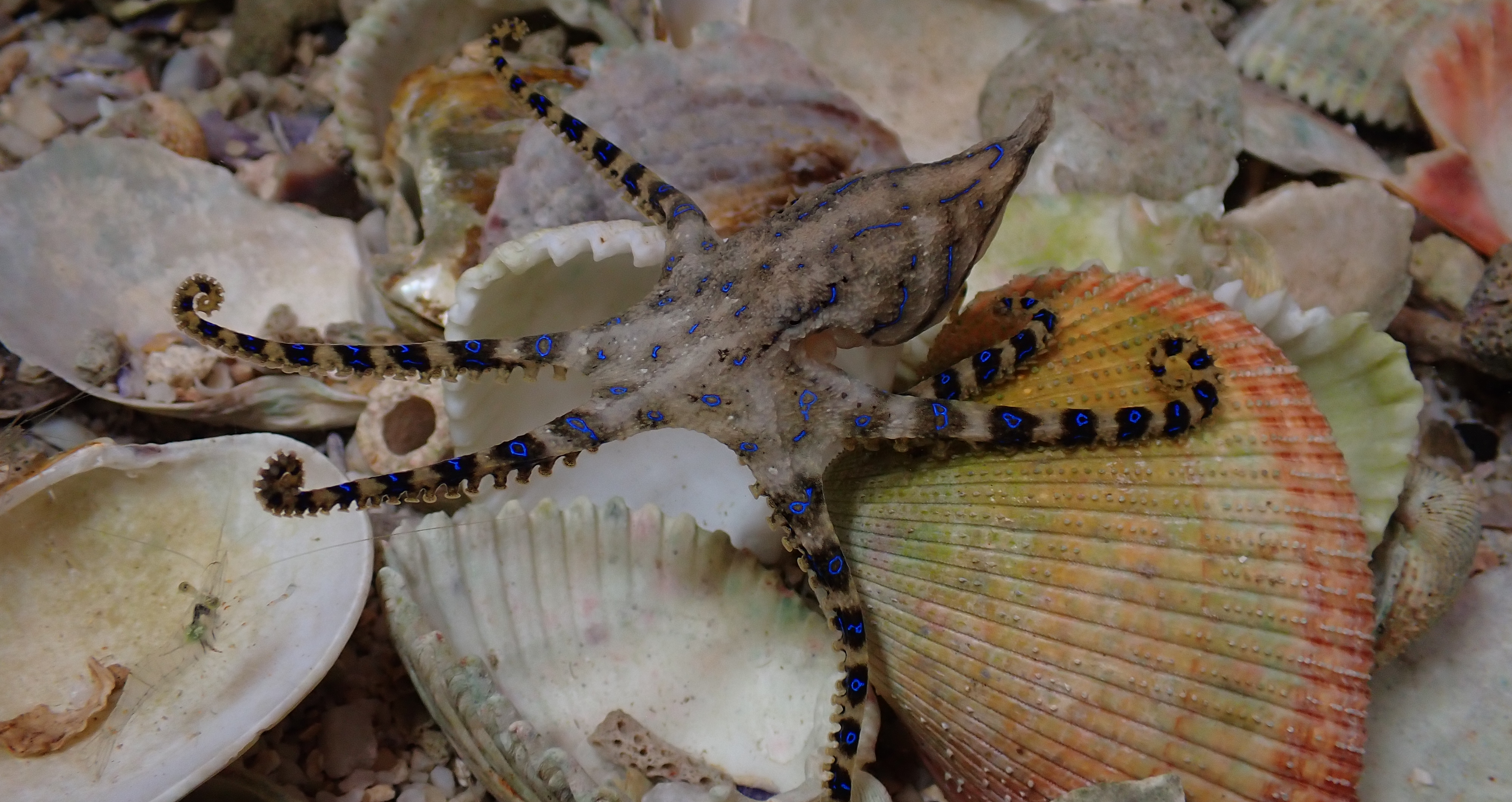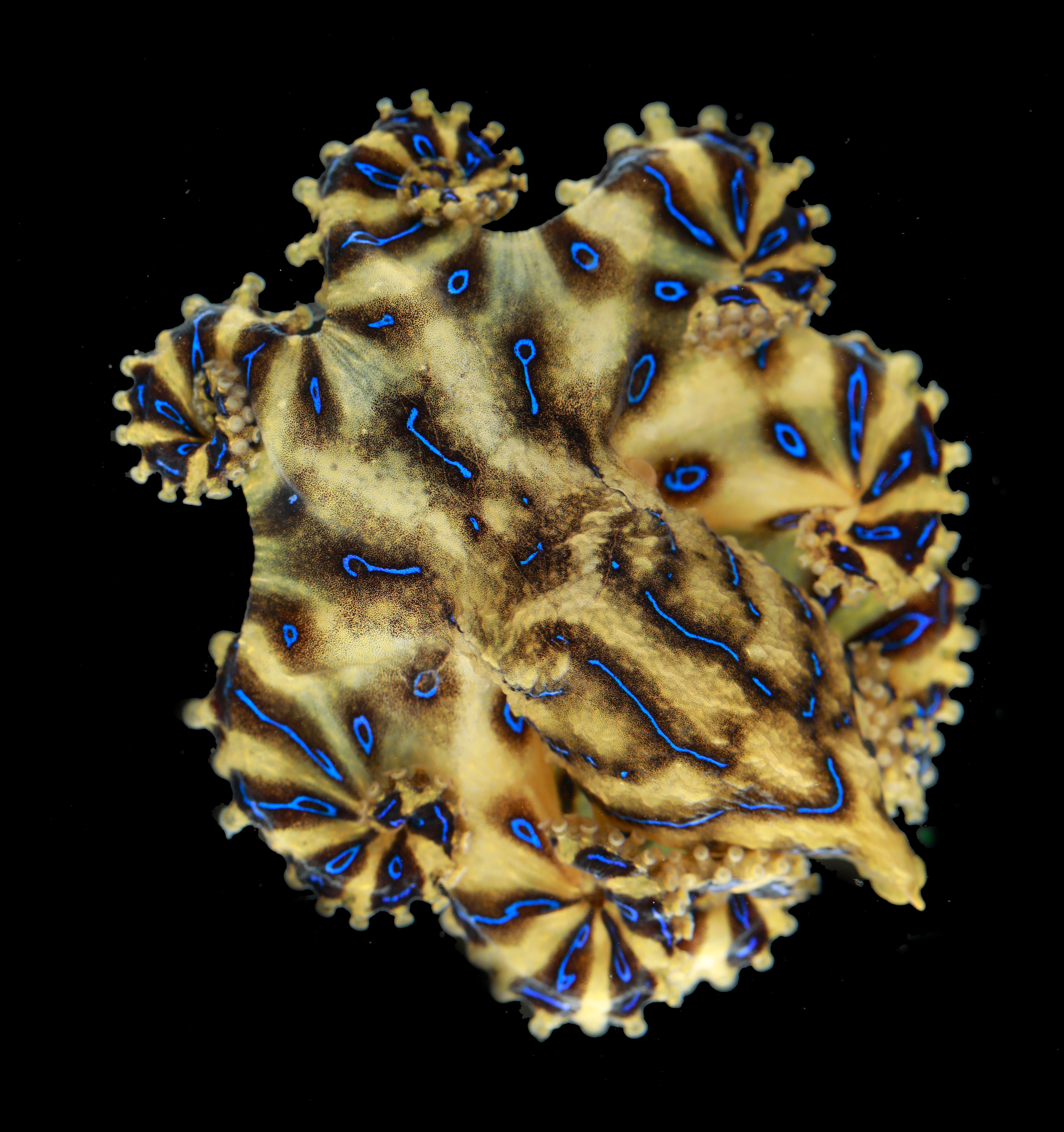Male blue-lined octopi (Hapalochlaena fasciata) have been found to use venom on their sexual partners, as well as for the usual reasons of defense against predators and subduing prey. Killing the females would be counterproductive, but adaptations mean that they just get sedated instead – moreover, the males would be well placed to plead self-defense.
ADVERTISEMENT
Sex is often a dangerous business. Many species are affected by some truly horrendous sexually transmitted infections, while in other cases the threat is from rivals or potential mates who reject their advances. However, a venomous bite from their male partner is the danger that female blue-lined octopi face. Although the females produce the same neurotoxin as the males, tetrodotoxin (TTX), that doesn’t make them immune to its effects.
Some animals (most notably mantises and many spiders) engage in sexual cannibalism, where the female eats the male after mating – after all, she needs the protein now she is eating for hundreds. In some species, the males appear to die willingly, making no effort to escape, donating their bodies to ensure the propagation of their genes. In others, however, only the males that can’t get away fast enough get consumed.

A more traditional view of a blue-lined octopus
Image Courtesy of Wen-Sung Chung
H. fasciata has much less extreme sexual dimorphism than their fellow members of the eight-limbed club. The females weigh only about double the males, but they’re ravenous enough to still be dangerous. A team led by Dr Wen-Sung Chung of the Queensland Brain Institute spied on octopi doing the deed and found that males bite the female’s aorta at the beginning of the dance.
The TTX immobilized the females – Chung acknowledged to IFLScience that part of the purpose may be to dispense with the question of whether the female will choose to mate, or thinks she can get a better offer elsewhere. That seems plausible since when placed together in a tank, Chung said; “Males repeatedly approach the females, and the females become so angry”, not really surprising if she knows what is to come.
However, the process also allows the male to make a getaway while the female recovers. That said, as with many other octopi the males are thought to only mate once, so it’s not clear what evolutionary benefit escaping provides.
If your sympathies have switched from the female to the male in this species, it’s worth considering that the males are deadbeat dads by our standards, doing nothing to support their young (unless they’re eaten). The females provide extended maternal care of the eggs, during which time they have few opportunities to feed.
ADVERTISEMENT
The team found that for males, mating comes with a lot of heavy breathing – going from 20-25 times per minute to 35-45 times. Meanwhile, the female’s breathing slows and then stops entirely for most of the hour during which the male transfers a spermatophore (sperm packet) to the female reproductive tract. Not what romance novels mean by a suitor taking someone’s breath away.
The asphyxia-like state induced causes the females to turn pale, and their pupils constrict and stop responding to light flashes. Unless you’re an octopus, please do not try this at home – if you are an octopus, wow, we already knew you were smart, but being able to read is even smarter.
This is such a normal thing on an H. fasciata date that the saliva glands in which the venom is made are three times larger in males than females.
ADVERTISEMENT
The authors note that partial resistance to TTX is seen in the closely related (and more famous) blue-ringed octopus, where it is thought to have evolved to avoid them harming themselves when dealing with struggling prey. They think the females have amplified this pre-existing trait to protect themselves from the males, leading the males to produce more venom and setting off an arms race. However, unlike most evolutionary arms races, the males cannot afford to overshoot by producing so much venom they kill the females. Chung and colleagues never witnessed this, but Chung acknowledged to IFLScience that their sample size was small (6 pairs) because the males are so hard to catch in the wild.
Chung told IFLScience; “Only a tiny amount of TTX Is needed for most [predator or prey] species. Transferring the spermatophore takes time, and would be almost impossible to complete without sedating the females, and because they have the resistance a lot of TTX is needed.”
Sex finishes when the females recover sufficiently to push the males away. The females sport an open wound on their aorta for about three days afterward. The bites need to be delivered with precision: The team saw one male miss the aorta, leading to the female recovering in 35 minutes instead of an hour.

Try finding the aorta on that.
Image Courtesy of Wen-Sung Chung
Humans are drastically larger than even female blue-line octopi, which grow to about 50 grams (1.76 ounces) – yet there have been several cases of their bites killing people, as well as many more being severely affected. That’s despite usually being bitten nowhere near the aorta.
ADVERTISEMENT
The authors note some male scorpions sting their mates to reduce aggression, although one might expect the opposite response.
The study is published in the journal Current Biology.
Source Link: Male Blue-lined Octopuses Use Venom To Stop Sexual Partners Eating Them